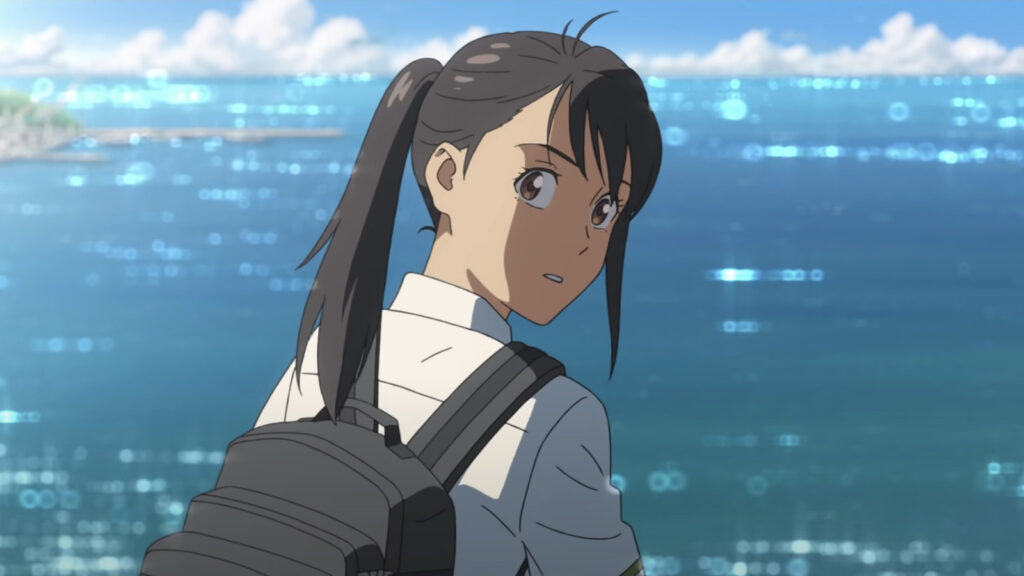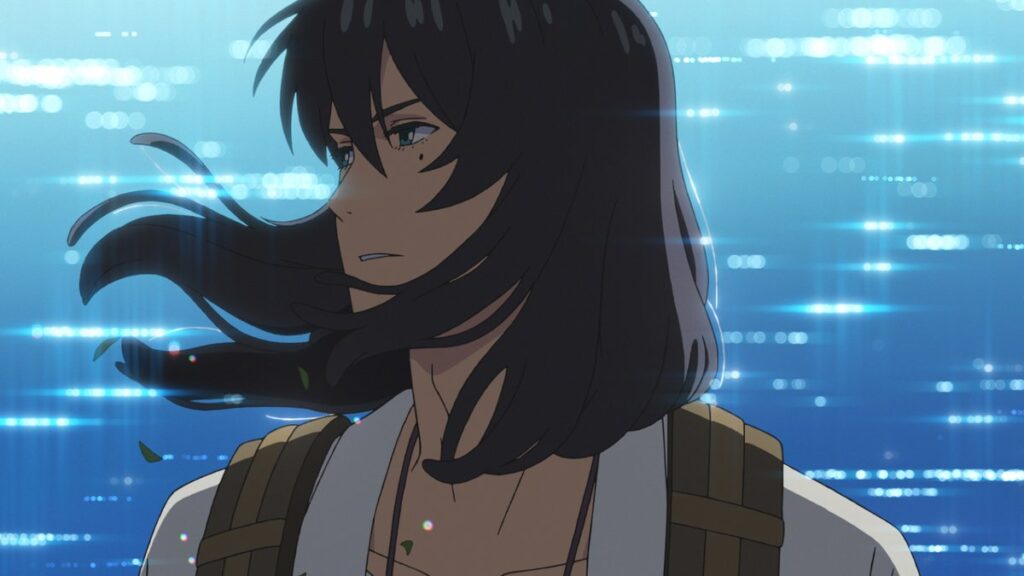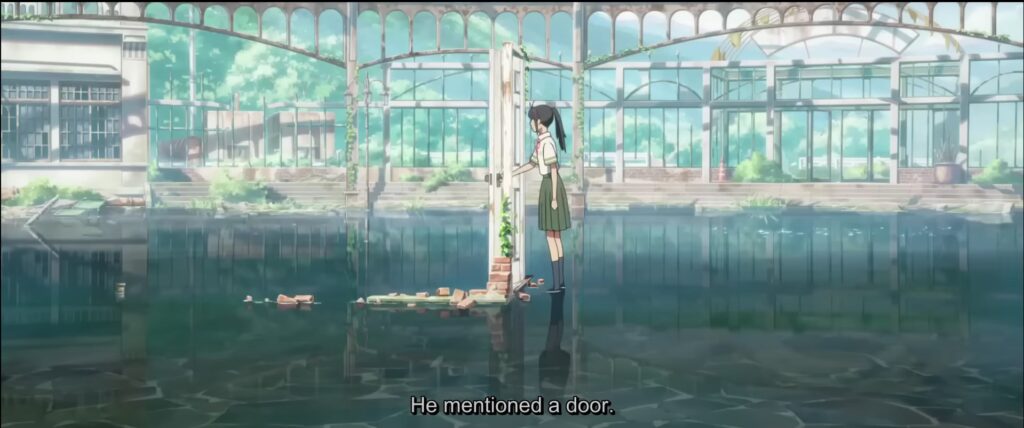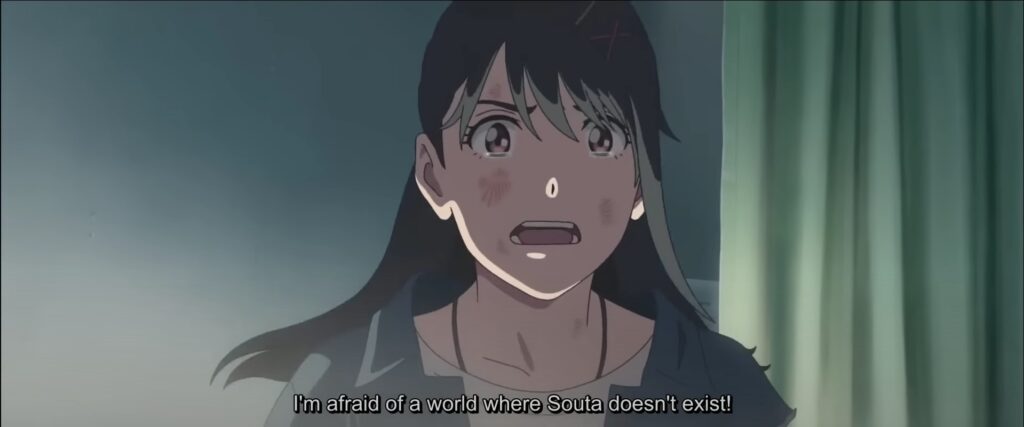The world has been bathed in the sunlight that is Makoto Shinkai, enamoring a larger base of the audience with each new spur (film) that he snares onto the world. Yet underlying such growing fame might be a similarly deteriorating quality when it comes to his work of art. Something about Makoto Shinkai’s creativity seems to be dimming by the growth of capitalist demands, and the need for these films to be financially ‘well-to-do’. Suzume no Tojimari was splendidly well received financially, but how deserving was its critical or artistic reception? That’s what we shall discover in this Suzume no Tojimari review.
Reminder that this is a non-major-spoiler review. Also, for a tinge of backstory – Spiel Times had arranged a free screening of Suzume in Assam. I was leading the charge there along with Pingal, Spiel Times’ founder. I had the opportunity to sit down to watch the film once everything was organized, and these down below are my personal reflections of what could have been, and what was.
Also Read: Join the Suzume Fever in Guwahati with Free Screening – Here’s how to get free tickets
A non-spoilered premise of the story for our Suzume no Tojimari review

- Suzume no Tojimari revolved around what seemed to be phenomena that appeared throughout Japan. These were connected to certain doors, which acted as a gateway to some nether dimension hosting an extradimensional worm.
Suzume, a girl who stumbles upon a mysteriously Howl’s Moving Castle-type-looking pretty boy, finds that she is capable of seeing and touching these doors. The same doors which are practically invisible to others, which shocks the young man that she had earlier stumbled upon. Then starts a journey of life, romance, and coming-of-age that ensembles a larger array of the cast than Your Name or Weathering With You did.
A larger overview of what was good and bad in Suzume

- Special mention still goes to the relationship between Suzume and her aunt, and also Daijin the apparently confused white cat.
- Without diving much into the complexities of the plot, I can however write to you that Suzume is splendidly well done in some aspects. While in others it is obvious that they are trying to ‘milk’ a known formula for what makes a film superhit at the Box Office.
The forced comedy, and out of everything else the forced Romance between the main two characters, feels just out of place. Not to add, some things happened too conveniently for the main characters just so they could have some development.
The thing about plots aligning for the characters, (partial plot armor)?

- However, it seems that the entire point of a movie, not just anime, but movies in general, is that the plot has to align in some way for the events to occur. I mean, that’s the point of the story being told from that perspective, right?
- The main protagonist has to come across the mysterious doors and has to have these mysterious innate powers to see these doors that lead to outer dimensions.
Right, but there might be a certain way in which that can be carried out. Such artistic craftiness is usually showcased in works of art done by directors on the level of Christopher Nolan, who is among the few that I personally recognize. Few have yet to let their commercial success devour their artistic expressions in their films.
A gentle example of the works of Christopher Nolan

In my earlier articles, I had considered Makoto Shinkai to be on the same level as Christopher Nolan and such. Primarily because the art he had created, envisioned even, was quite different from the usual bunch.
The Romance in Your Name was one of the most beautifully crafted, the pacing, the touching, everything seemed to work in a clog like a watch piece. But this connectivity and fluidity of development between the two characters seem to be dimming as Shinkai has aged.
In praise of Suzume no Tojimari’s visualizations

But one of the beautiful aspects of the film still remains its musical score, accompanied by breathtaking visuals. In this department, the only one coming close to Shinkai’s accompanying CoMix Wave films studios seems to be Ufotable.
But then again Ufotable’s action plan for Anime is very different. Shinkai’s natural imagery of mountains, lakes, oceans, and cities, is something unprecedentedly unimagined for many of the Animation directors in the Anime industry. Whereas Ufotable may pride itself in relentlessly well-spun Action sequences.
How Makoto Shinkai brings out realistic personal-life relationships as a way of art

- Another aspect that was beautifully crafted was personal relationships. There is a scene where the evil cat manipulates Suzume’s aunt to bring out her worst feelings. In the spur of her negative array, Suzume’s aunt blurs out all the bitter feelings she’s ever felt for Suzume, for having to be a mother at an age where she didn’t want to be.
- Basically ever since Suzume’s mother was gone, her aunt had taken care of her. The scene was particularly breathtaking, given that she immediately realized what she had done once Daijin’s influence goes out.
She then cries her heart out, and later even confronts Suzume. Telling our main protagonist that although she had felt that way every now and then, that’s not all she’s ever felt. Because she truly loved Suzume, as her own child, and those feelings are not unreal.
Suzume was also mature enough in understanding such an undertaking. Even accepting and forgiving her Aunt for those bitter words. That was unimaginably beautiful, and relatable.
Human beings are indeed multifaceted, and we feel both light and darkness within us, without only one of them having to be the polar reality of our inner worlds. Such a multifaceted way of the psyche being grabbed by Shinkai is only a loving compliment to his already beautiful work of natural beauty.
Concluding

I might be sounding like an English professor here, but bear with me, as I now bring the ending part of this review.
Shinkai Suzume no Tojimari is indeed a beautiful piece of work, of art. But it seems the art is gradually being dimmed by an ever-rising demand for commercial and financial success.
Some things felt too cliche and ‘anime-ish’, similar to typical cliche Hollywood gestures. The supernatural part was unexplained for the most part, never going further than that ‘they simply exist’. The worm, for example, and Daijin’s polar black and light sides with each capable of terraforming into a building-size cat, were also unexplained.
Such oddities make it feel like the film wanted to cheese out the romance out of an unexplained world-building. That dims the film’s beauty, to a great extent.
RATING: 7/10
Also Read: BTS: Possible Enlistment Dates + Solo Schedules
To check out details on how we held the event, please check out this post on Instagram.